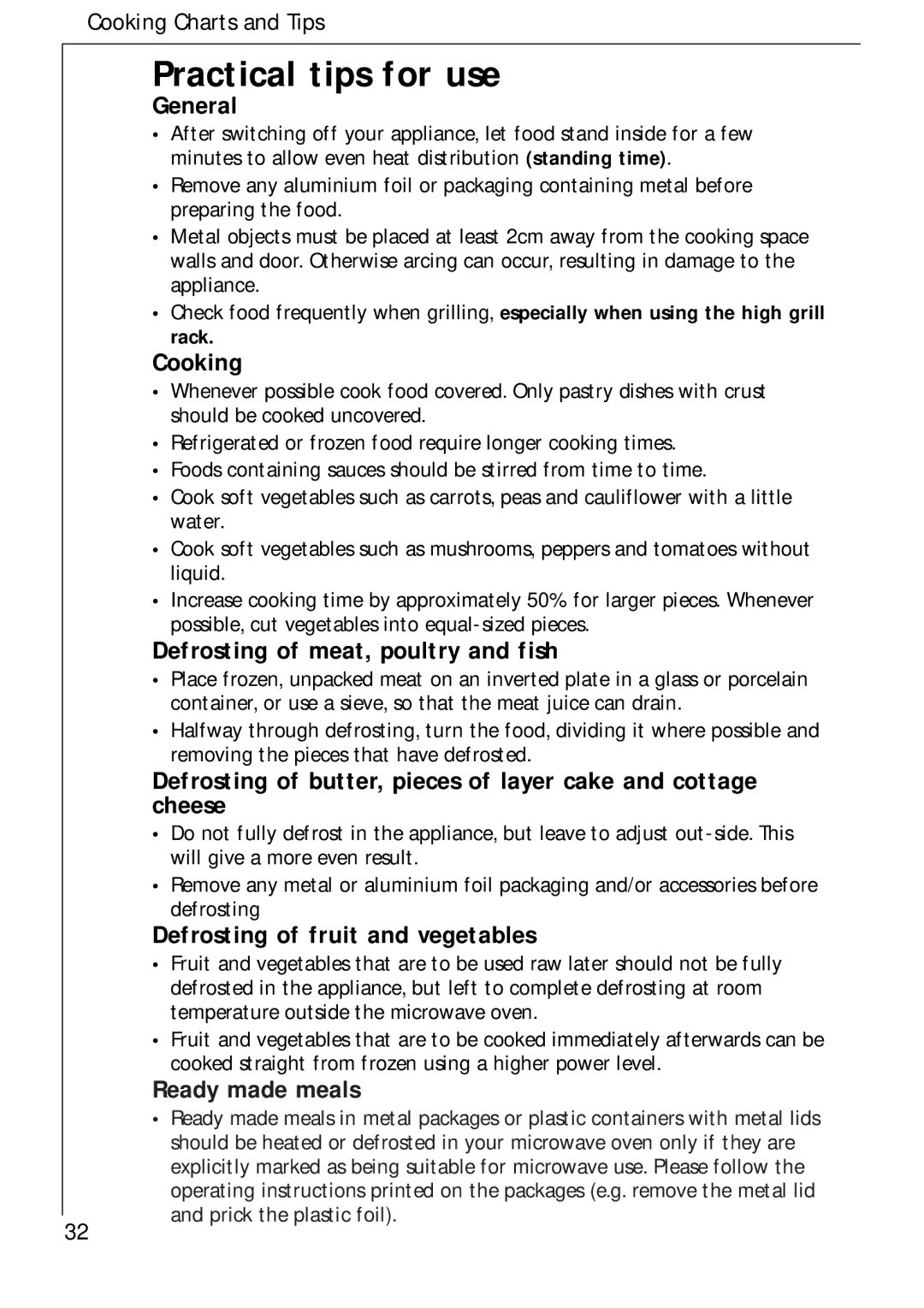
Cooking Charts and Tips
Practical tips for use
General
•After switching off your appliance, let food stand inside for a few minutes to allow even heat distribution (standing time).
•Remove any aluminium foil or packaging containing metal before preparing the food.
•Metal objects must be placed at least 2cm away from the cooking space walls and door. Otherwise arcing can occur, resulting in damage to the appliance.
•Check food frequently when grilling, especially when using the high grill rack.
Cooking
•Whenever possible cook food covered. Only pastry dishes with crust should be cooked uncovered.
•Refrigerated or frozen food require longer cooking times.
•Foods containing sauces should be stirred from time to time.
•Cook soft vegetables such as carrots, peas and cauliflower with a little water.
•Cook soft vegetables such as mushrooms, peppers and tomatoes without liquid.
•Increase cooking time by approximately 50% for larger pieces. Whenever possible, cut vegetables into
Defrosting of meat, poultry and fish
•Place frozen, unpacked meat on an inverted plate in a glass or porcelain container, or use a sieve, so that the meat juice can drain.
•Halfway through defrosting, turn the food, dividing it where possible and removing the pieces that have defrosted.
Defrosting of butter, pieces of layer cake and cottage cheese
•Do not fully defrost in the appliance, but leave to adjust
•Remove any metal or aluminium foil packaging and/or accessories before defrosting
Defrosting of fruit and vegetables
•Fruit and vegetables that are to be used raw later should not be fully defrosted in the appliance, but left to complete defrosting at room temperature outside the microwave oven.
•Fruit and vegetables that are to be cooked immediately afterwards can be cooked straight from frozen using a higher power level.
Ready made meals
•Ready made meals in metal packages or plastic containers with metal lids should be heated or defrosted in your microwave oven only if they are explicitly marked as being suitable for microwave use. Please follow the operating instructions printed on the packages (e.g. remove the metal lid and prick the plastic foil).
32
